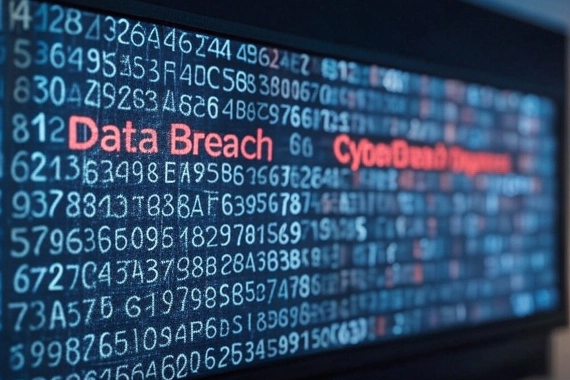Wondering how to prevent data theft in your company? Are you up to date on the best practices to prevent a data breach?
According to IBM, only one-third of companies discover a breach through their own security teams.
67% of breaches are reported by a benign third-party or the attackers themselves.
Clearly, we have a problem with both detecting and preventing data theft.
In this post, we’ll cover everything you need to know about how threat actors steal data, as well as 13 tips to prevent data theft within your organization.
What Is Data Theft?
Data theft is the unauthorized acquisition, transfer, or disclosure of sensitive information.
This includes personal data like names, addresses, Social Security numbers, credit card details, and health records, as well as corporate data such as trade secrets, financial records, and intellectual property.
The goal is often to use this information for financial gain, identity theft, corporate espionage, or other malicious purposes.
How does data theft happen?
Data theft can happen in various ways, including:
- Hacking: Cybercriminals exploit vulnerabilities in computer systems, networks, or software to gain unauthorized access to data. This can be done through methods such as SQL injection, phishing attacks, or exploiting unpatched software vulnerabilities.
- Malware: Malicious software such as stealer malware, viruses, spyware, and trojans can be used to infiltrate systems and steal data (including employee and customer credentials). For example, stealer malware logs all the plaintext credentials and session tokens on the infected device before they’re encrypted.
- Compromised Third-Party Systems: If a vendor or service provider’s system is hacked, attackers may gain access to the credentials stored within that system. If your employees had accounts on the affected system and re-use passwords on multiple applications, attackers can exploit those credentials to gain access to your network.
- Insider Threats: Employees or insiders with legitimate access to data may intentionally or unintentionally leak or steal information. This can occur due to malicious intent, carelessness, or being tricked by social engineering tactics.
- Physical Theft: Devices such as laptops, smartphones, external hard drives, or USB drives containing sensitive data can be physically stolen, leading to data theft.
- Phishing and Social Engineering: Cybercriminals use deceptive emails, messages, or websites to trick their victims into revealing sensitive information such as login credentials or personal details.
- Unauthorized Access: Gaining access to restricted areas, whether physically or digitally, without proper authorization can lead to data theft.
What types of data are most often stolen?
The types of data most often stolen by cybercriminals can vary depending on the target and the attacker’s objectives. However, some common types of data that are frequently targeted include:
- Personal Identifiable Information (PII): This includes names, addresses, Social Security numbers, driver’s license numbers, and other information that can be used to identify an individual. PII is often used for identity theft, fraud, and other malicious activities.
- Financial Information: Credit card numbers, bank account details, and other financial data are highly sought after for financial fraud and unauthorized transactions.
- Health Information: Medical records, health insurance information, and other sensitive health-related data can be used for insurance fraud, blackmail, or even to obtain prescription drugs illegally.
- Login Credentials: Usernames, passwords, session tokens, and other authentication data can be used to gain unauthorized access to various accounts and systems, leading to further data breaches.
- Intellectual Property: Trade secrets, proprietary technology, and other intellectual property are often targeted for corporate espionage or competitive advantage.
- Corporate Data: Business plans, financial reports, and other confidential corporate information can be valuable for competitors or individuals looking to exploit the company.
- Customer Data: Information about customers, including personal details, payment information, and purchasing habits, that can be used for identity theft or targeted marketing.
- Business Operational Data: Data related to the day-to-day operations of a business, such as supply chain information, strategic plans, and operational metrics, that can be valuable for competitive analysis or operational disruption.
What are the Consequences of Data Theft?
Data theft can have quite severe and far-reaching consequences for individuals, organizations, and even nations. Some of the major consequences include:
- Financial Loss: Data theft can cause organizations to suffer significant financial losses. These can include the cost of unauthorized transactions, the expense of rectifying the breach, and potential fines and legal fees.
- Identity Theft: Stolen personal identifiable information (PII), such as names, addresses, social security numbers, and financial account details, can be used for identity theft, credit card fraud, and other forms of financial fraud, causing significant harm to individuals.
- Reputational Damage: Data breaches and theft can severely damage the reputation of an organization, leading to loss of customer trust, negative media attention, and potential loss of business opportunities.
- Legal and Regulatory Penalties: Many jurisdictions have laws and regulations that require businesses to protect personal data. Failure to do so can result in hefty fines, legal action, and other regulatory penalties.
- Operational Disruption: Data theft can disrupt business operations, especially if critical data is lost or systems are compromised. This can lead to downtime, loss of productivity, and additional costs to restore operations.
- Loss of Intellectual Property: The theft of intellectual property can result in a loss of competitive advantage, as stolen information can be used by competitors or sold to other parties.
- Compromised National Security: When government or military data is stolen, national security can be compromised, potentially leading to threats to public safety and national interests.
13 Tips to help keep your data safe
- Use A Password Manager: Generate all passwords via a password manager. This will ensure that passwords are both strong and unique across all applications. An added benefit is that it also helps prevent phishing attacks by auto-filling passwords in the browser.
- Enable Multi-Factor Authentication (MFA): MFA adds an extra layer of security by requiring a second form of verification, such as a code sent to your phone, in addition to your password.
- Keep Software Updated: Regularly update your operating system, applications, and antivirus software to patch security vulnerabilities.
- Segment Your Network: Divide your network into separate segments to limit access and reduce the potential impact of a breach. This can help prevent an attacker from gaining access to all parts of your network if one segment is compromised.
- Monitor Network Traffic: Regularly monitor your network for suspicious activity to detect potential security threats early.
- Develop an Incident Response Plan: Establish an incident response plan before a breach happens. This will enable you to quickly address and mitigate security incidents.
- Use Full-Disk Encryption: Encrypt the entire hard drive of your computer or mobile device to protect all stored data, making it inaccessible to unauthorized users without the proper decryption key.
- Be Wary of Phishing Attacks: Exercise caution with unsolicited emails, links, or attachments, as they may be phishing attempts to steal your login credentials or infect your systems with malware.
- Regularly Back Up Data: Regularly back up important data to an external drive or cloud storage. This can help you recover your information in case of a data breach or hardware failure.
- Limit access to sensitive data: Implement access controls and the principle of least privilege, granting access to sensitive data only to those who absolutely need it.
- Conduct Regular Security Audits: Conduct security audits regularlyto identify vulnerabilities and assess the effectiveness of your security measures.
- Provide security awareness training: Educate employees on data security best practices, such as recognizing phishing attempts, proper handling of sensitive data, and the importance of strong passwords and access controls. Always back up employee training with technical controls that prevent human error.
- Data Breach Monitoring: Monitor the dark web for any company-related data that has been leaked or stolen. Early detection enables you to reset credentials before criminals exploit them.
Need visibility into the dark web to find your breached data? Book a demo to see how Breachsense enables security teams to mitigate the impact of leaked data before criminals exploit it.



